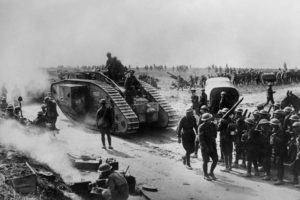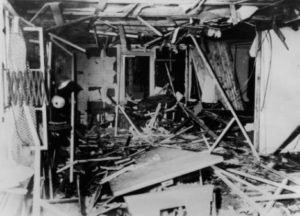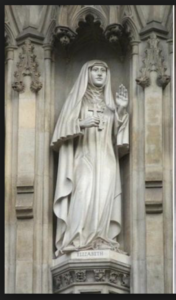Death of a noble bigamist
Kitty Cannon was a pretty girl from the village of Thorpe in Essex. Her beauty led to her being courted by a number of young nobles but, none of these titled individuals condescended to breathe in her ear a single word about matrimony; so, when she was just twenty, she gave her hand, and (it is to be presumed) her heart also, to the rector of Thorpe, a Reverend Mr. Dough.
A quiet and remote parsonage, however, was not exactly suited to the taste of a young lady who had once sipped the cup of flattery from gentlemen who belonged to the clubs about St. James’s, and who moved in courtly circles. Accordingly, one evening when she was staying in London, being present at a ball in the neighborhood of the then fashionable district of Covent Garden, she managed to slip out, unobserved by her husband, and to run away with John, Lord Dalmeny, heir to vast estates and the title of the Earl of Rosbery, who was only a few years older than herself. She had no children, and doubtless his lordship was led to believe that she was a widow, and quite at her own disposal.
The pair went abroad, and remained for two or three years traveling in the sunny south; but in the early summer of 1752 Kitty Cannon, or Kitty Gough, was taken seriously ill at Florence. Her illness turned into a galloping consumption, and in the May or June of that year she died. A few hours only before her death, she wrote upon a scrap of paper, ‘I am really the wife, of the Reverend Mr. Gough, vicar of Thorpe, near Colchester, Essex ; my maiden name was Kitty Cannon, and my family belong to the same parish. Bury me there.’
Lord Dalmeny’s young wife, as he always thought her to be, was gone before he was able to realize the full meaning of the lines which she had written. At first he was disposed to reject them, as a creation of her sick brain; it was impossible for him to believe that the dear companion of his last few years was guilty of bigamy. But, whether true or false, he at once resolved, as she lay in her coffin at Florence, to give effect to her last wish, and he instantly prepared to carry her remains over to England.
The body of this lovely woman was embalmed, and secured in ‘a very fine oaken coffin’, decorated with six large silver plates, and it was then put into a strong outer case of common deal, which concealed the ominous shape of its contents. The jewelry and wardrobe of the lady were packed in other chests, and with this cumbersome baggage Lord Dalmeny set out upon his melancholy journey by land to the south of France. At Marseilles he was able to engage a vessel to carry him and his packages by sea round to Dover, under the assumed name of Mr. Williams, a merchant of Hamburg; and on landing at Dover he transferred his belongings to a small coaster, which he hired to carry him to Harwich, then a busy and bustling port, only a few miles distant from Thorpe. The vessel, however, was forced by contrary winds to make for Colchester instead, where the Custom House officers came down to the Hythe to examine the freight before they would allow it to be landed. They could not recognize in the elegant and polished gentleman, whom they saw dressed in the deepest of black and bowed down by grief, a common business man from Hamburg; and they very naturally thought, as only seven years had passed since the rebellion of 1745, that he was some emissary of ‘the Pretender.’ So their loyalty took the alarm.
It certainly was the plain duty of Custom House officials to see that no French tobacco, gloves, lace, or brocade was brought over in these large boxes without paying duty to King George. Accordingly, without giving any attention to the remonstrance’s of Mr. Williams, they were about to plunge their knives into the larger case, when the Hamburg merchant drew his sword and told them to desist. He at once made a clean breast of the affair, telling them that he was an Englishman, and, what was more, an English nobleman, and that the chest upon the wharf contained the body of his dead wife. But this explanation did not satisfy the officers, who were not sure that there was not a murder at the bottom of the transaction. They therefore at once broke the outer chest, tore open the coffin lid, and lifted the cere-cloths from the face of the embalmed corpse. Lord Dalmeny was taken, along with the coffin, to a church near at hand, where he was detained until he could prove the truth of his story.
The news soon spread about, and crowds of the neighboring villagers came to see the fair lady’s face as she lay in her coffin. Many of these identified her features as those of the Kitty Cannon who had spent her childhood at Thorpe, and who had disappeared soon after her marriage with the vicar of that parish.
But here was a further difficulty for his lordship; for, though the rest of his story was transparently true, it was clear that the lady was not really his lawful wife. A communication was at once forwarded to the vicar, who lost no time in coming over to the Hythe and recognizing the corpse as that of his vanished partner. But what a mystery the whole affair was to him as well as to Lord Dalmeny, to whom at first, as may be supposed, he entertained and expressed no very friendly feelings. But he was soon pacified. Possibly he had preached but lately a sermon enforcing forgiveness of even intended wrongs, and here was a wrong which clearly was not intended. Accordingly as soon as he was able to contemplate the matter in all its bearings—the deception which had been practiced on the poor young nobleman, and the passionate constancy which had borne him up through his toilsome journey by land and voyage by sea in order to gratify his supposed wife’s last prayer, and the faithfulness with which, like a dog, he watched beside her coffin in the church—he felt that he could not refuse to forgive the wrong, and he consented to meet Lord Dalmeny on a friendly footing.
The interview between the two rival husbands is said in a family record to have been very moving, and no doubt must have been touching in the extreme; the only wonder is that it has not been taken by play-writers to work out as a plot for the stage. Lord Dalmeny assured the husband of his entire innocence of fraud, and of the honest intentions with which he had acted throughout. Even the discovery of his long-lost Kitty’s deceit and guilt did not put his love to shame, or shake his determination to follow her to her last resting-place. And the same was the feeling of his lordship. The next day, as soon as the magistrates were satisfied that the law had not been broken, both husbands accompanied the loved remains to Thorpe Church, where the poor frail lady was buried with all the pomp and show which could have been accorded to a real peeress. Which of the two paid the undertaker’s bill is not stated; but I have every reason to believe that the cost was paid by Lord Dalmeny, or amicably settled between them. It is said that the funeral cortege was stopped for a few minutes at the gates of the vicarage, and that the young nobleman walked into the house, from which he presently came forth arm-in-arm with Mr. Gough, who was clothed in mourning as deep as his own, and with scarf and headband to match. This happened on July 9, 1752 and seems to be the first time an Englishwoman had two husbands attend her funeral at the same time.













